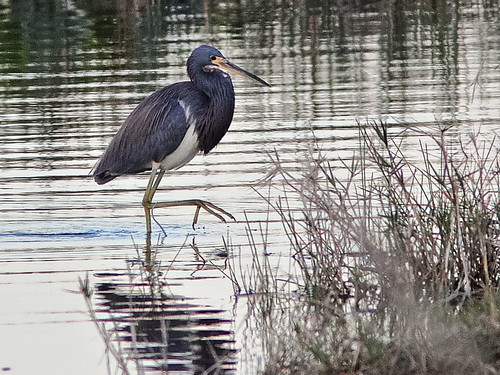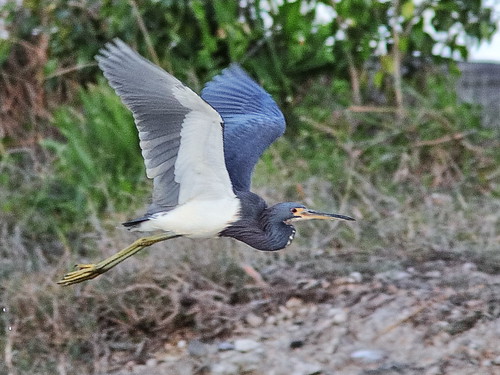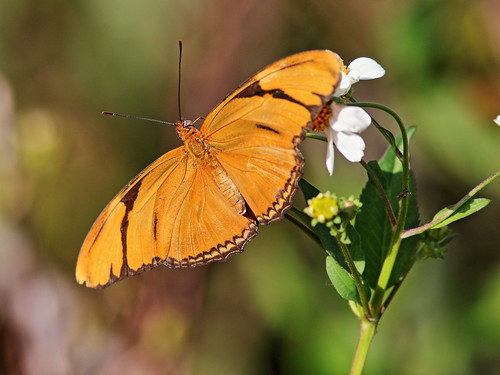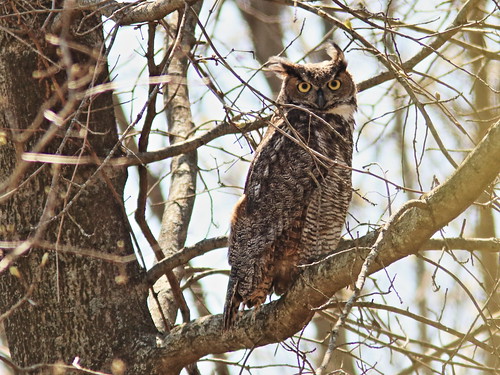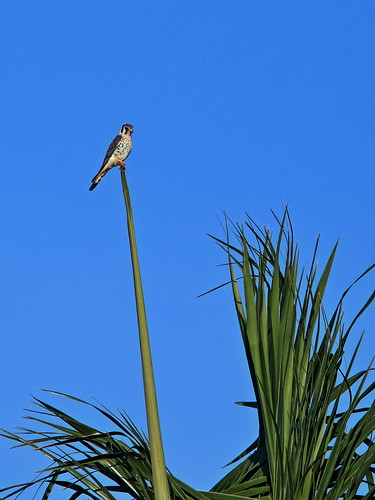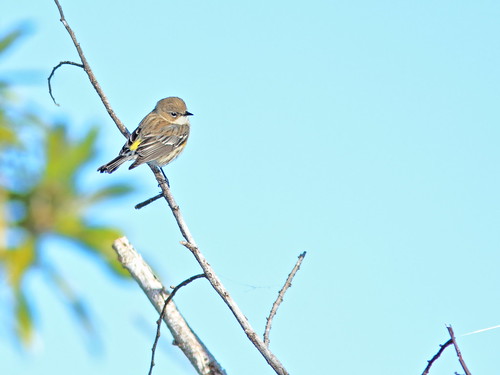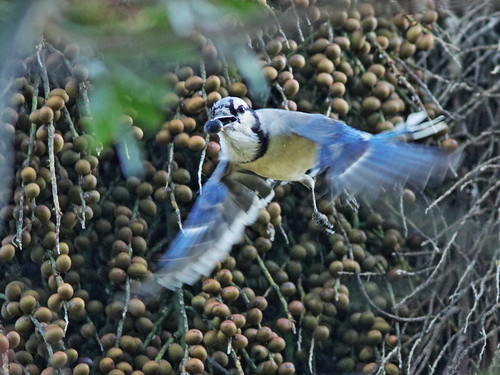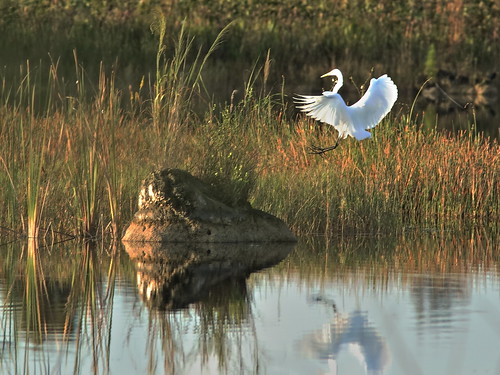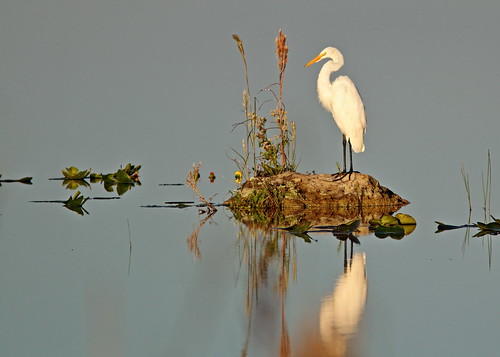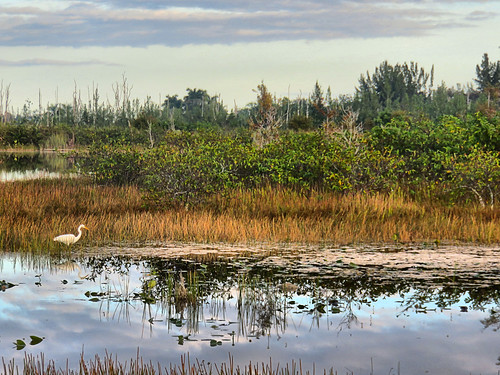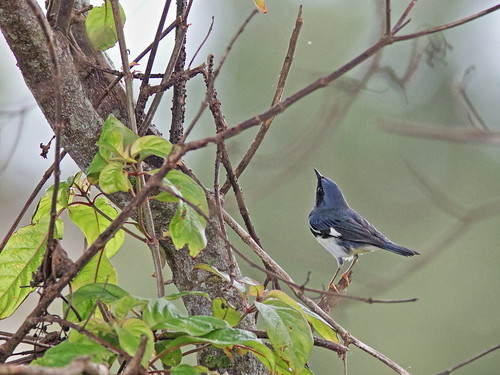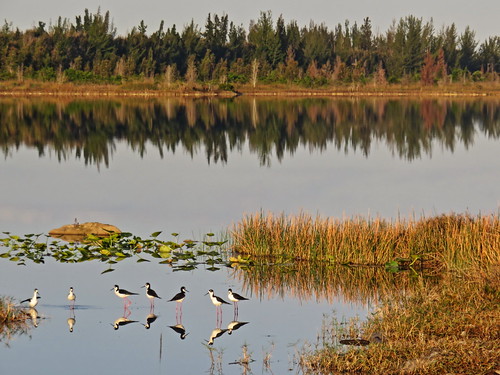It is too dark for photos in the deeply shaded rookery, but it is worth trying as I encounter a juvenile Yellow-crowned Night-Heron subduing a frog, but then having trouble swallowing it:


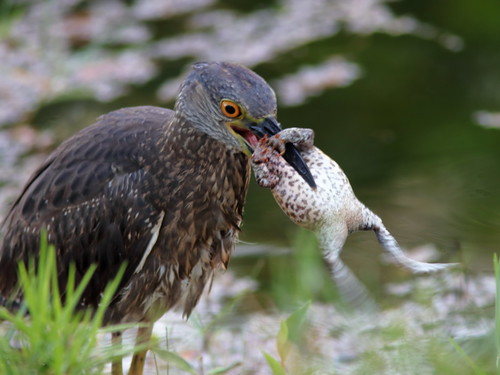
Now feeling the darkness, I muse about the Virus and how it is affecting our lives. Instead of trips to supermarket we order online. Items such as eggs and other dairy, produce and meat products, many of which were "in stock" when we requested them are "out of stock" by the time they got around to fulfilling the order.
The airline reservations will almost certainly need to be be canceled for a trip to Illinois in May, along with our children and grandchildren. We planned to celebrate our granddaughter's Quinceañera* and our 60th Wedding Anniversary. We are bombarded by an incessant flow of reports on the progress (or lack thereof) of combating the pandemic.
A Mottled Duck is barely visible in the darkness. I turned on the flash and was later surprised at how well this image turned out after being brightened and sharpened. Since I was some distance away, the flash caused a "glass eye" reflection which I had to darken:
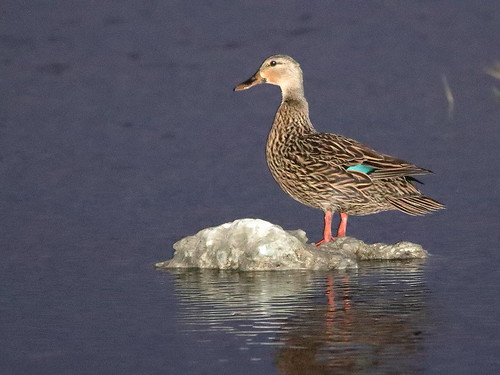
High in the sky, my steady hand (correction, the image stabilizer of my camera) allows me to count the moons of Jupiter and even see the pink cast of Mars:

A few days previously my focus was poor but the two planets were closer together and colors of Mars shone through:
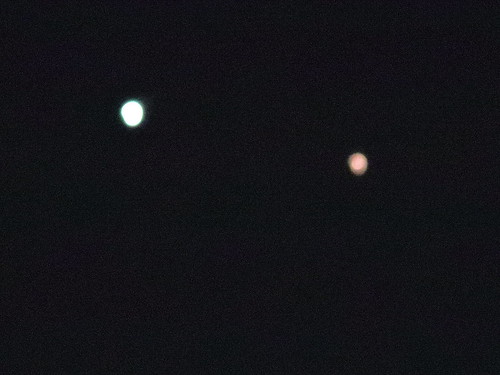
Out in the dark, my nearest overhead neighbor is the Red Plant, but I am not lonely. I catch the eye-shine of an anxious Raccoon, a semi-submerged alligator, or a deer frozen in the glare of my flashlight. What are they thinking?
Are they just programmed by instinct and "stimulus-response," or am I surrounded by consciousness... that of the moths attracted to the beam of my flashlight... the mosquitoes sensing my carbon dioxide emissions.. the viruses, unseen and locked as we are in a drive to survive, to live, to reproduce?
A virus is just a chemical that it needs to make. Its progeny cannot kill the host too rapidly or it will never have the chance to spread and multiply. Does the ant feel pain when I crush it underfoot? Does the Panther grieve when it visits the place where its cub was run over, only to meet the same fate?
Overnight, the "Wreckreational Vehicle" drivers had gathered to wreak more havoc on the South Wet Prairie. One such participant must have had engine failure and left his four-wheeler behind. In the glow of my flashlight it looks surreal, two-dimensional:

By dawn's light, the landscape shows scars left by their fun-filled night of wheelies, donuts and jumps:

Thigh-deep in muck, two immature White Ibises add life to a desolate scene:
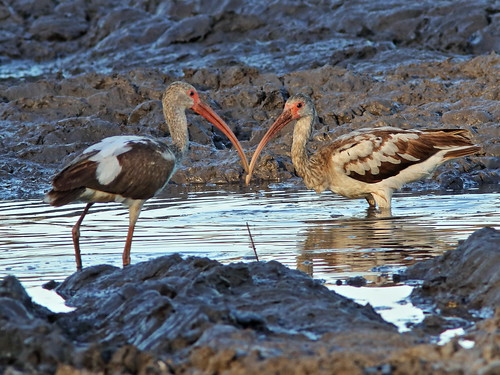
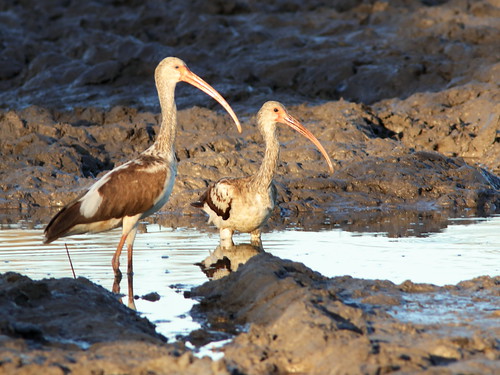

So many younger folks seem to feel reassured that COVID-19 will not be much of a problem for them. It may cause them discomfort but not death. The statistics from Italy zone in on the risk to older victims. For those over 70, the average age of death is 85 years. I do not like being "average." No, I am "above average," like all the children in Lake Wobegon.**
Being stuck at home does force me to appreciate what I have. Certainly MaryLou's company and the helpfulness of neighbors who offer to pick up groceries or simply inquire about our welfare are reassuring. Having a lake in the back yard and a shaded patio is a real plus.
Seen through the back sliding glass door, a Double-crested Cormorant rests on the goose decoy which serves as the float for the intake of our lawn irrigation system:
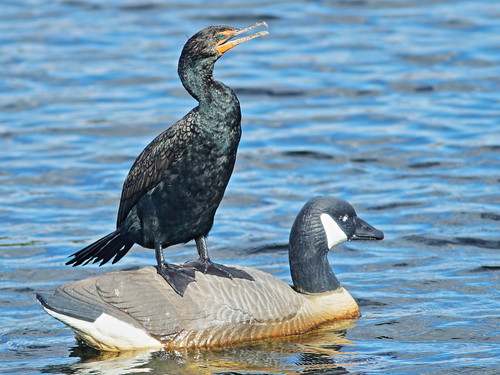
Here are the modest "crests" which earn the bird its name (and check out those jewel-like eyes):
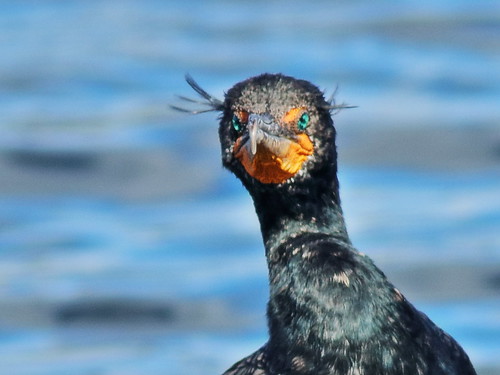
This female Anhinga, seen through the glass, is drying her wings:
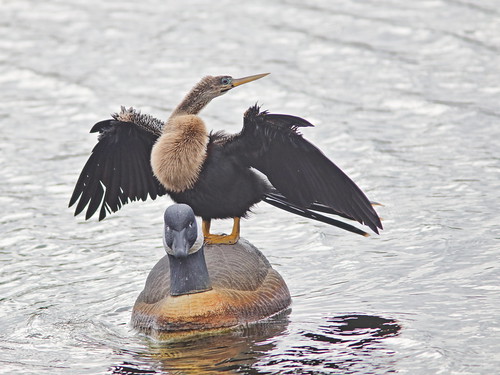
A window-viewed Tricolored Heron is backed by the lake's wind-disturbed surface:
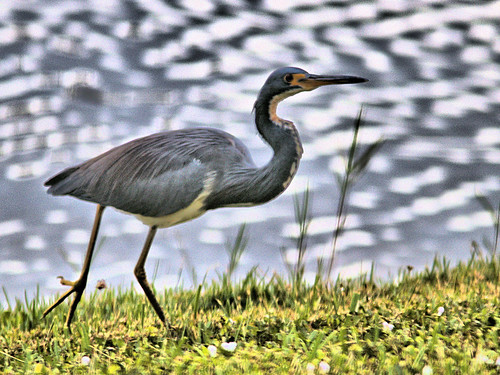
With stealth, I can creep outside and even get some photos which are not distorted by window glass (or darkness, as was the case in all the foregoing "Pixillated Masterpieces").
A case in point is this Yellow-bellied Sapsucker duo, cooperating to riddle the bark of our West Indies Mahogany tree. They did their best to stay on the opposite side of the trunk, so I rarely got full-body shots. This is the immature bird, which lacks the red cap:
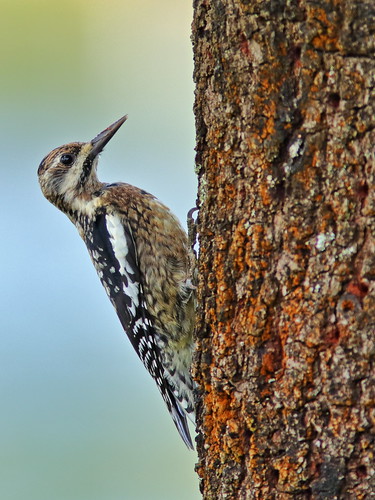
The adult female sapsucker has red on her head but not the red throat of a male:

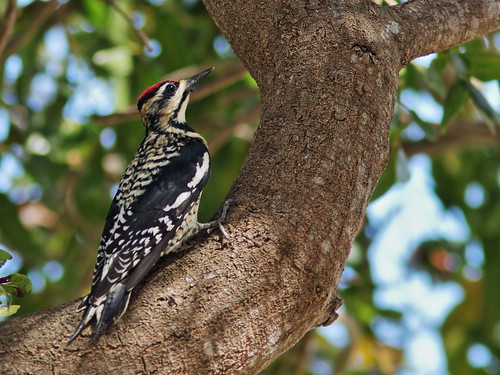
Because of our habit of walking out so early, we often miss a colorful sunrise over our backyard lake. Out on the wetlands, we can watch as the shadow of the earth sinks into the western horizon over the Everglades.
The North Wet Prairie before sunrise on March 18::
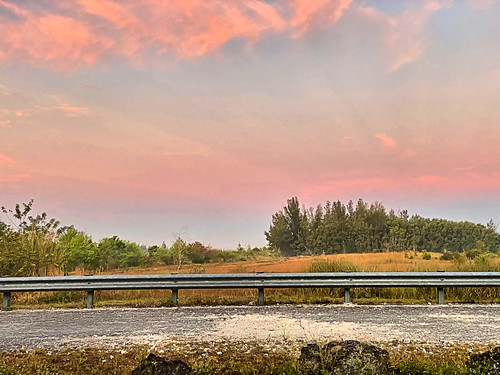
Ten minutes after sunrise on March 24, the sunbeams have not yet touched the opposite shore, but they brighten the sky overhead to create a shadow-free foreground:
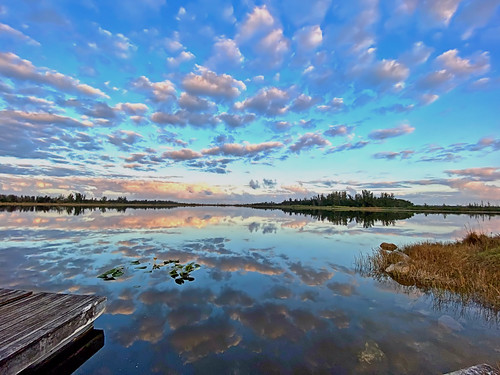
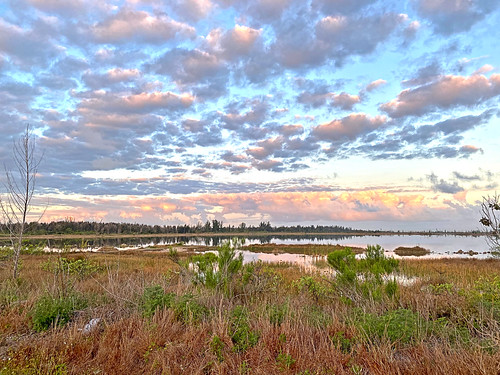
= = = = = = =
*Quinceañera, (Spanish: “15 years [feminine form]”) also called quinceaños or quince años or simply quince, the celebration of a girl’s 15th birthday, marking her passage from girlhood to womanhood; the term is also used for the celebrant herself. The quinceañera is both a religious and a social event that emphasizes the importance of family and society in the life of a young woman. It is celebrated in Mexico, Latin America, and the Caribbean, as well as in Latino communities in the United States and elsewhere. REF: Encyclopedia Britannica
**Lake Wobegon is a fictional town created by Garrison Keillor as the setting of the "News from Lake Wobegon" segment of the radio program A Prairie Home Companion... Keillor's weekly monologue about Lake Wobegon included recurring elements... The closing words of the monologue were "Well, that's the news from Lake Wobegon, where all the women are strong, all the men are good-looking, and all the children are above average." RE: Wikipedia
= = = = = = = = = = = = = = =
Linking to:
Fences Around the World
Skywatch Friday
Weekend Reflections
Saturday's Critters
BirdD'Pot
Camera Critters
All Seasons
Wordless Wednesday (on Tuesday)
Our World Tuesday
Wild Bird Wednesday
________________________________________________
Please visit the links to all these posts to see some excellent photos on display
________________________________________________
